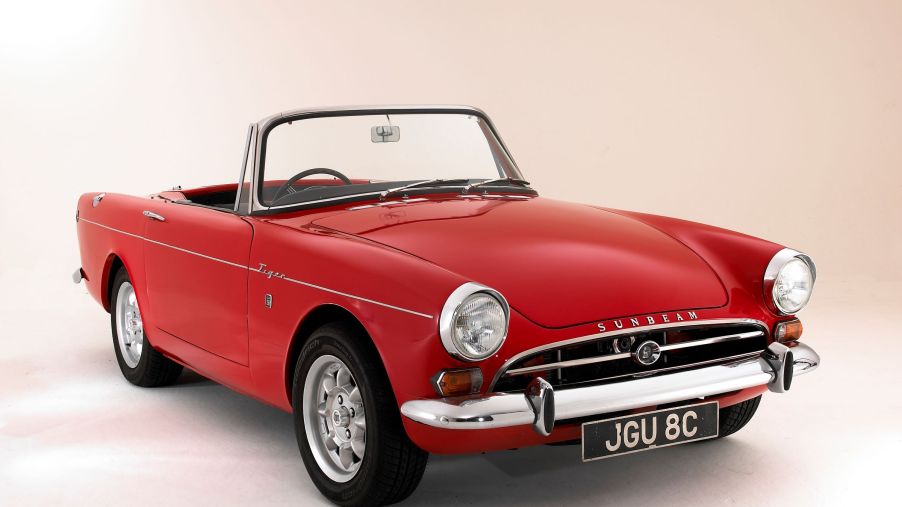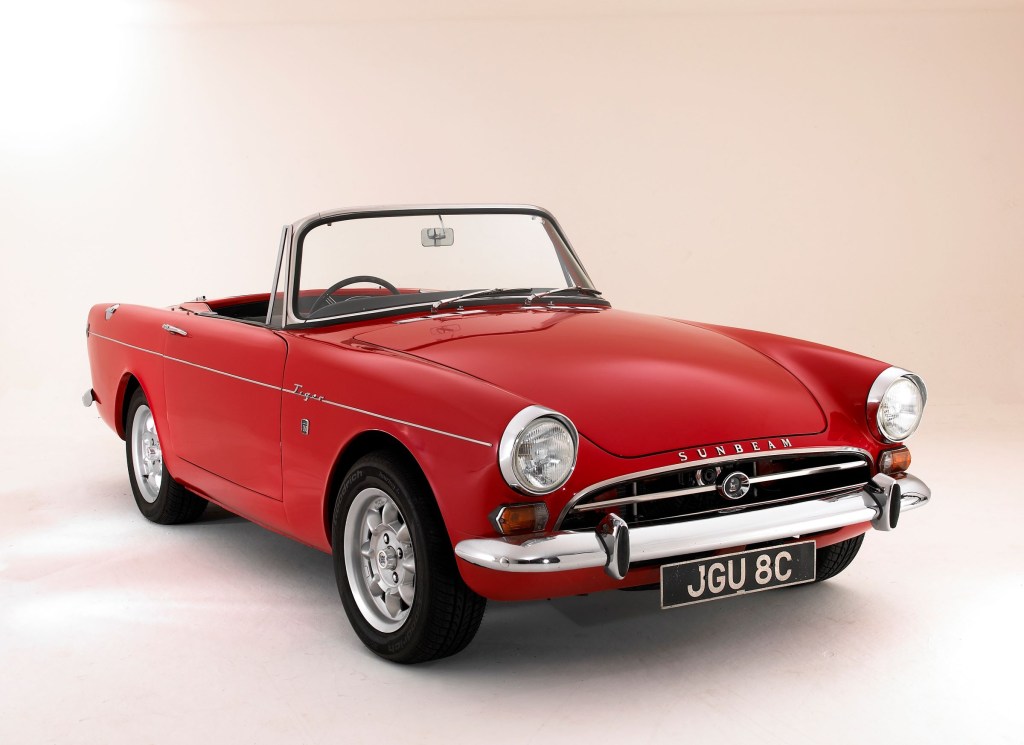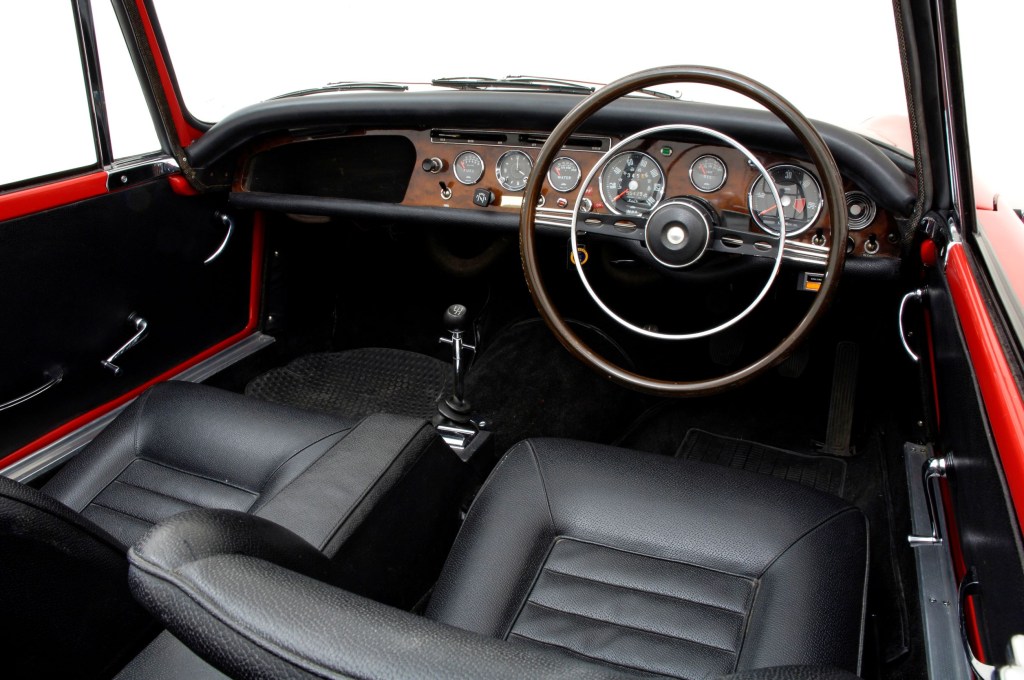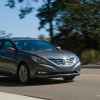
The Sunbeam Tiger Is Not a Shelby Cobra Clone and That’s OK
Throughout the 1950s, 1960s, and 1970s, hybrids were European car chassis powered by torquey American engines. Arguably the most iconic of these classic ‘hybrids’ is the Shelby Cobra. Putting a Ford V8 into the AC Ace’s body turned a reasonably fun roadster into a world-famous and world-beating sports car. But while it’s tangentially related to the Cobra, the Sunbeam Tiger isn’t its carbon copy. However, that doesn’t mean it isn’t a fun beast in its own right.
After crafting the Cobra, Carroll Shelby helped Sunbeam give the Alpine some Tiger claws

Technically, ‘Tiger’ isn’t the Sunbeam roadster’s full name; that would be ‘Sunbeam Tiger Alpine.’ But while it doesn’t wear a Shelby badge, Carroll’s fingerprints are all over it. And they’re there because of the Cobra.
Turning the AC Ace into the first Cobra wasn’t just a boon for the then-new Shelby American. Although the standard Ace was a decent sports car, it wasn’t exactly fast. A lack of speed meant a lack of sales—at least until Shelby gave it a V8 injection, Road & Track explains. And that gave Britain’s automotive conglomerate the Rootes Group an idea.
In 1959, the Rootes Group launched the Sunbeam Alpine to compete with roadsters like the Triumph TR3, original Austin-Healey, and the MGA, RM Sotheby’s says. But just like the original Ace, it suffered from a lack of power and speed. However, seeing Shelby’s success with the Cobra, and being egged on by F1 World Champion Jack Brabham, the Rootes Group decided to follow its lead. And who better to give the Alpine some sharper fangs than the man behind the Cobra?
Carroll Shelby almost didn’t get the job, though. When the Rootes Group asked him to create a V8-powered Alpine prototype, it also reached out to Shelby collaborator and racer Ken Miles. But while Miles’ prototype cost less to build, the Group’s founder preferred Shelby’s version, Silodrome says.
Even so, fitting a V8 into a small sports car takes some work. But after some additional tweaks, the hot-rodded Alpine was ready to hit the road. And in 1964, it launched with a new name: the Sunbeam Tiger.
It takes after the Shelby Cobra, but the Sunbeam Tiger is its own animal
‘Launched’ is indeed the right word given how much more powerful the Sunbeam Tiger is than a base Alpine.
In 1959, the Alpine made less than 80 hp. In contrast, the 4.3-liter Ford V8 in the 1964-1966 MK1 and MK1A Tiger makes 164 (gross) hp and 258 lb-ft of torque, MotorTrend reports. And the 1967-1968 MK2 Tigers have 4.7-liter Ford V8s rated at 200 (gross) hp and 282 lb-ft of torque. So, even though the Tiger weighs about 280 lbs more than the Alpine, it’s noticeably faster. A MK1 model can go 0-60 mph in 7.8 seconds, Hagerty says.
That being said, an original Shelby Cobra, especially a 427 model, is even faster than a Sunbeam Tiger. And while the Cobra was designed as much for the track as the road, the Tiger is more of a sporty luxury GT. However, that doesn’t mean Tiger owners didn’t race their cars, R&T notes. Plus, Sunbeam offered performance parts for the Tiger such as upgraded carburetors, sportier suspension, hotter camshafts, and limited-slip differentials as part of its ‘Los Angeles Tiger’ program.

Also, while the Sunbeam Tiger isn’t as raw as a Shelby Cobra, that doesn’t mean it’s not fun to drive. Although it weighs more than the standard Alpine, most of the Tiger’s extra weight comes from chassis reinforcements, rather than its bigger engine, Hagerty says. As a result, it retains excellent front-rear weight distribution and nimble handling. Plus, rather than Alpine’s recirculating-ball steering, the Tiger has a rack-and-pinion setup, which is more accurate and communicative.
And what the Sunbeam Tiger gives up in rawness, it makes up in livability. It has well-cushioned bucket seats that recline and offer height adjustment. The roadster also has a telescopic steering wheel, illuminated glovebox, heater, roll-up windows, and an optional radio. And even with the hardtop, it’s fairly roomy. This is a British roadster that can handle both twisty roads and road trips—and the American V8’s reliability certainly doesn’t hurt, MT muses.
A Tiger isn’t “a poor man’s Cobra,” Hagerty chides, but it’s noticeably more affordable
There’s another benefit to getting a Sunbeam Tiger instead of a Shelby Cobra: affordability. An original Cobra 427 easily costs $1 million or more these days. Tigers, though they’re not exactly cheap, are significantly cheaper.
A good-condition MKII Sunbeam Tiger typically costs about $100K, while a MKIA in similar shape costs about $65K, Hagerty says. And these prices have been holding steady for the past few years. For example, RM Sotheby’s auctioned a 1967 MKII Tiger in August 2021 for $100,800.
If you’re looking to score a Tiger, though, make sure it’s been inspected by qualified experts. Some Alpine owners swapped their roadster’s original engines for V8s to get Tiger-level power without actually buying a Tiger. These ‘Alger’ fusions aren’t necessarily bad cars, but they shouldn’t be priced at Tiger levels. Luckily, the Tiger Authentication Committee has experts worldwide who can certify a specific Sunbeam’s originality, Hagerty notes.
In short, the Sunbeam Tiger doesn’t quite have the Shelby Cobra’s venomous bite. But while it’s not the “poor man’s Cobra,” it’s arguably “the thinking man’s Cobra,” Hagerty muses. And it still has a vintage V8 growl.
Follow more updates from MotorBiscuit on our Facebook page.


